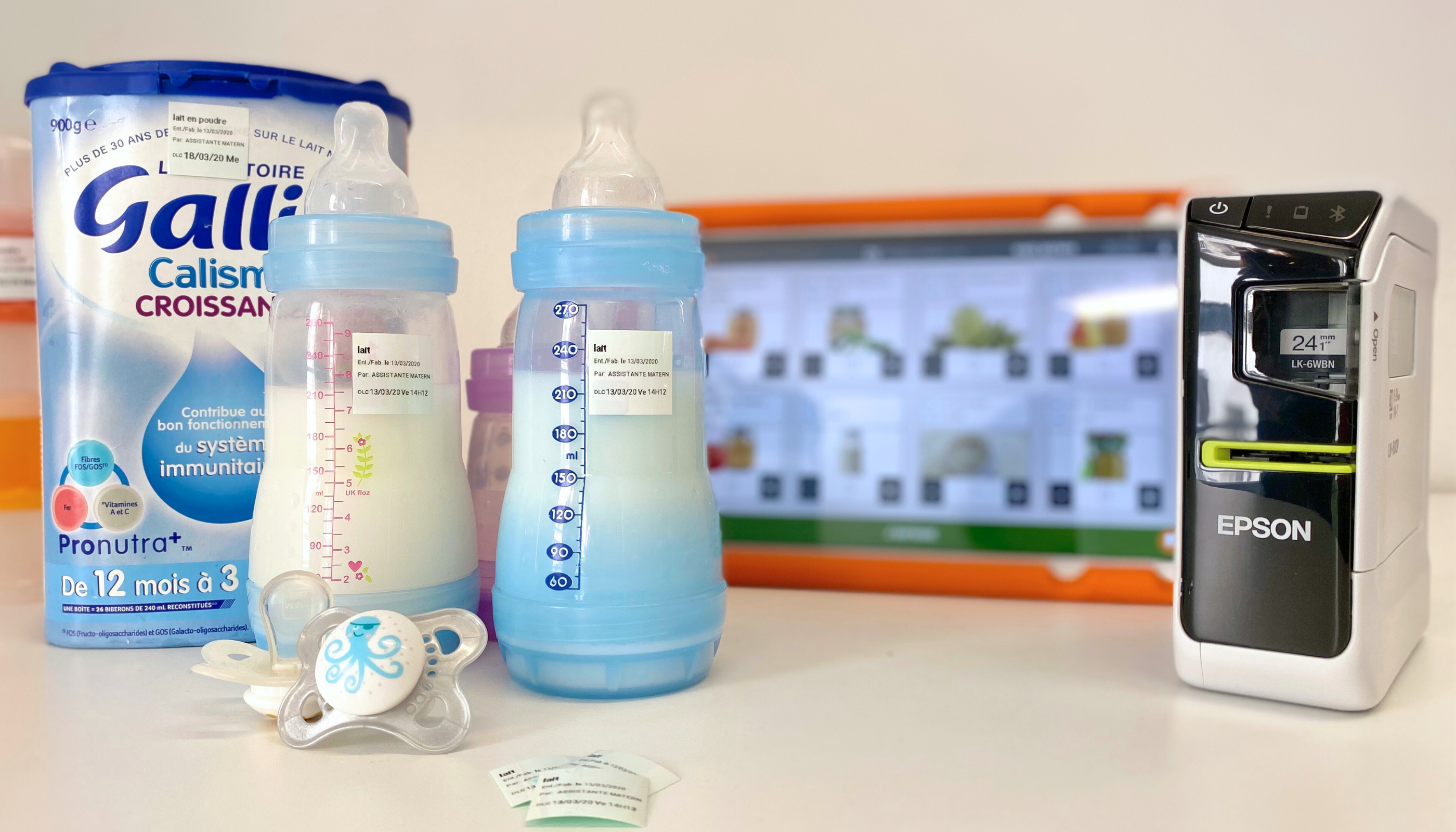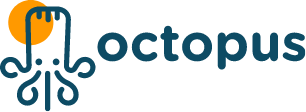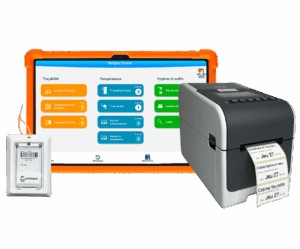HACCP Protocols in Daycare: How to Ensure Hygiene?
Comprendre l’HACCP
⏳ Temps de lecture : 6 min
? Mis à jour le : 05/10/2024
Table of Contents
- HACCP Protocols in Daycare: What Are the Obligations?
- HACCP Standards in Daycare or HACCP Method: What’s the Difference?
- HACCP in Daycare: What Does the Regulation Say?
- How to Apply the HACCP Method for the Bottle-Feeding Area?
- Is It Necessary to Sterilize Bottles in Daycare?
- Summary of Good Hygiene Practices in Daycare
HACCP Protocols in Daycare: What Are the Obligations? 🍼
As with all collective settings, it is important to apply HACCP protocols in daycare. Respecting the rules of collective catering to ensure children’s food safety is essential. ✅
The young age of children makes them particularly vulnerable and at high risk of infections. In daycare, it is therefore crucial to strictly follow the HACCP method and its protocols to minimize physical, chemical, and biological risks. ⚠️
Whether during the preparation of bottles and meals, or more generally to ensure the implementation of cleaning protocols within the daycare or micro-daycare. 🧼
HACCP Standards in Daycare or HACCP Method: What’s the Difference? 🤔
It is not a legal standard per se; it is better to speak of the HACCP method.
The HACCP protocols in daycare follow the 7 main principles:
- ⚠️ Hazard analysis,
- ⚠️ Determination of critical control points (the well-known CCPs: Critical Control Points),
- Setting the critical limit(s),
- ⚠️ Implementation of a monitoring system for hazard control measures at the CCPs,
- ✅ Determination of corrective actions to be taken when a CCP is out of control,
- ✏️ Application of verification procedures to confirm that the HACCP system is functioning effectively,
- 🗂️ Compiling a file containing all procedures and records related to these principles and their application (traceability).
- 1 PDF table to make your statements
- 1 Excel table to create your cleaning plan
- 2 teaching sheets
HACCP in day-care centers: what do the regulations say?
Ttraceability ?
To guarantee internal traceability, you need to keep the BBD or MDD and keep the batch numbers of your products. ?
For each product you need to keep the information on the label, i.e.:
- The name of the product,
- His DLC (Use By Date) or DDM (Date of Minimum Durability),
- His lot number.
To preserve this information, cut out and store your labels for a maximum of 6 months in a folder provided for this purpose. ?️
Ensuring the Hot and Cold Chain ❄️
- You must check your cold storage units at least once a day to verify that their temperature remains below 4°C. During these checks, record the measured temperatures and archive this data. This can be done on paper or via HACCP software like Octopus. For maximum safety, you can equip your cold storage units with wireless temperature loggers to receive alerts if a unit exceeds the maximum allowed temperature or malfunctions.
- If you receive deliveries via hot chain 🚚: You must certify that products delivered from the central kitchen are kept above 63°C and maintained at this minimum temperature until service.
- If you receive deliveries via cold chain ❄️: Products must be kept at a maximum of 3°C and stored in cold storage until reheating for items meant to be consumed hot.
- During reheating of ingredients, dishes, or purees, they must raise from below 10°C to above 63°C in less than ⏳ one hour. In practice, since children will never eat food that is too hot, you have a maximum of two hours to serve the preparation after reheating. It is acceptable to reheat to a temperature lower than 63°C if the consumption is immediate. 🍽️
The HACCP App for Daycares
Do you need help properly implementing the HACCP method in your daycare?
Did you know?
With the Octopus HACCP app, you are guided to correctly perform the mandatory safety checks in your daycare.
You won’t forget anything to properly record the traceability of preparations and bottles 🍼, monitor temperatures ❄️, and manage the cleaning plan ✨ — ensuring full compliance with regulations.
Maintenance plan?️
You need to establish a cleaning and disinfection plan and record the tasks carried out every day, every week, every month, etc.
Then, for surface maintenance, you need to use professional cleaning products. In addition, you need to keep the technical data sheets and safety data sheets for each product. ?️
How to Apply the HACCP Method for the Bottle-Feeding Area? 🍼
The bottle-feeding area is mandatory and must comply with Regulation 852/2004/EC, relating to food hygiene (ventilation, well-maintained surfaces, sanitary facilities, one-way flow, and the obligation to define a written cleaning and disinfection plan). 🧼
Cold storage units must ensure the cold chain is maintained. The cold chain is guaranteed when the temperature is at or below 4°C. ❄️
To verify that the cold chain is respected, it is mandatory to check temperatures daily and record them. This can be done on paper or through HACCP software.
Should baby bottles be sterilized in nurseries?️
However, cleaning of the bottles and accessories is mandatory and must be followed by a disinfection step at a minimum of 65 °C. 🧼
Semi-professional dishwashers reach temperatures of 85 to 86 °C. They can therefore disinfect bottles, nipples, etc., during the washing cycle. It is important to ensure that the minimum temperature of the dishwasher is 65 °C.
Storage of bottles: clean bottles can be stored in cold storage units to limit microbial growth or kept in a cupboard protected from dust. 🧴
The staff must be qualified (dietitian, pediatric nurse, early childhood educator, childcare assistant, internal service agent) and trained in food hygiene.
Finally, work clothes must be changed daily and follow basic hygiene rules:
- 👕 Short-sleeved clothing,
- 💁♀️ Clean, short or tied-back hair, wearing a single-use hairnet,
- No watches or jewelry (hands and wrists), short, clean nails without polish.
The AFSSA published in July 2005 a reference document for PMI services concerning the hygiene recommendations for the preparation and storage of bottles.
Summary of Good Hygiene Practices in Daycare 👶🏻
- 🧼 Always wash your hands before any handling,
- ⏳ Storage rules: Maximum storage time at 4°C: Water bottles: 24 hours after opening. Milk bottles: 24 hours after opening. Everything stored in cold storage must be labeled (product name, preparation date and time, expiration date/time, name of the preparer). Consumption deadline: maximum 1 hour after preparation of bottles. Do not exceed the 1-hour limit for bottle consumption. Anything not consumed within one hour must be discarded. The bottle must be disassembled, rinsed, and washed immediately after consumption.
- ❄️ Cold storage monitoring: Check and record the internal temperature of cold storage units daily. Positive cold storage units: temperature less than or equal to 4 °C. Regular calibration of thermometers must be done to ensure they work correctly.
- Remember: Do not heat bottles using a microwave oven. Prefer using a bottle warmer to heat bottles and test the temperature of the contents before giving to the child. Bottles can be consumed at room temperature.
- Remember: Powdered milk preparations are not sterile and should be used within 30 days of opening. Always label any opened container (opening date, minimum expiration date).

Contact our HACCP expert in day-care centers, who will be delighted to answer your questions and show you our solution.





